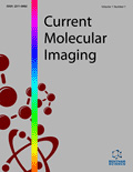Abstract
Translational projects frequently test agents by intravenous injection into small animals. One problem is that it is usually uncertain exactly how successful each injection is at time of administration. This leads to high variation in measurements and necessitates the use of larger groups of animals. To circumvent this problem, we introduce a novel near infrared imaging method to determine injection success in adult and neonatal mice. By co-injecting a near infrared fluorophore AngioSense 750 with a therapeutic agent, the location of near infrared fluorescence can be used to determine injection quality. To test this method, an Adenoviral (Ad) vector expressing luciferase was co-injected with AngioSense at different sites in adult and neonatal mice. When injection was successful, the near infrared fluorophore entered into the bloodstream and spread throughout the body of the animal and vector-mediated luciferase activity was observed in the liver. When intravenous injection was a failure, the near infrared and subsequent luciferase signals remained localized at the injection site. This work has been performed with adult and neonatal mice using an adenoviral vector, but it can be translated to other small animals or small anatomic sites for any therapeutic or basic science application.
Keywords: Adenovirus, intravenous injection, systemic injection, near infrared fluorescence imaging, contrast agent.
 31
31


